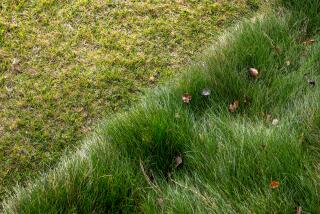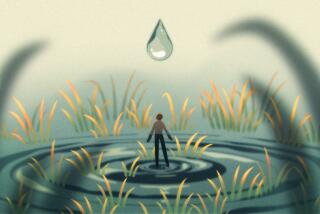Grass is greener on this side
- Share via
Gardeners can be beguiled easily by the restless, light-filled ballet of ornamental grasses, but it’s widely known that certain varieties can escape from yards and cause serious problems in the wild.
Although author Rick Darke celebrates grasses in this hefty new reference due out next month, he hopes readers will do more than get lost in the book’s 1,000 photos. He urges gardeners to know their local habitats -- “behave like responsible managers,” he writes -- and plant only those grasses that will sustain and enhance the natural ecology of one’s home turf.
For the record:
12:00 a.m. March 3, 2007 For The Record
Los Angeles Times Saturday March 03, 2007 Home Edition Main News Part A Page 2 National Desk 0 inches; 26 words Type of Material: Correction
Grasses: A photo caption with a book review of “Encyclopedia of Grasses for Livable Landscapes” in Thursday’s Home section misidentified purple needle grass as deer grass.
For The Record
Los Angeles Times Thursday March 08, 2007 Home Edition Home Part F Page 7 Features Desk 0 inches; 24 words Type of Material: Correction
Book review -- In a review of “Encyclopedia of Grasses for Livable Landscapes” last week, the caption misidentified purple needle grass as deer grass.
Good design, he suggests, follows naturally, as each region’s grasses convey an intrinsically appropriate style. Who needs Mexican feather grass when you can grow California’s official state grass, purple needle grass, Nassella pulchra?
Opening chapters discuss the global significance, botany and beauty of grasses. Design, cultivation and maintenance also are detailed. The massive plant encyclopedia describes hundreds of different grasses and grass-like rushes, sedges, restios and cattails -- with specifics to help gardeners select the most appropriate grasses for their conditions and help nurseries decide which ones to stock.
--Lili Singer






